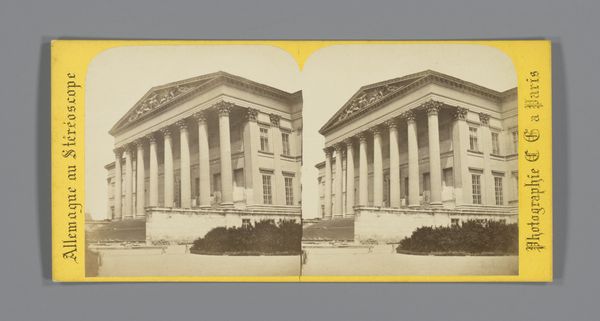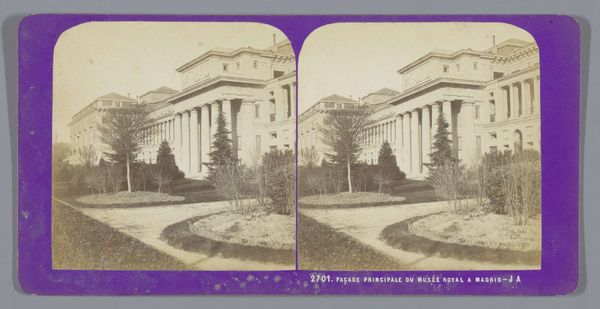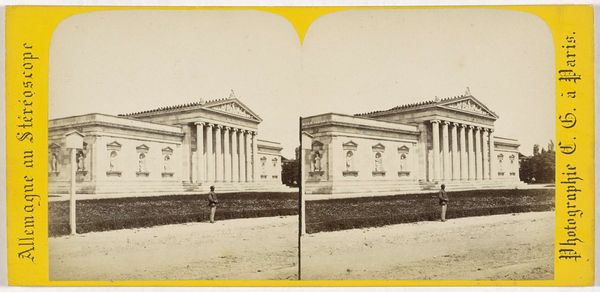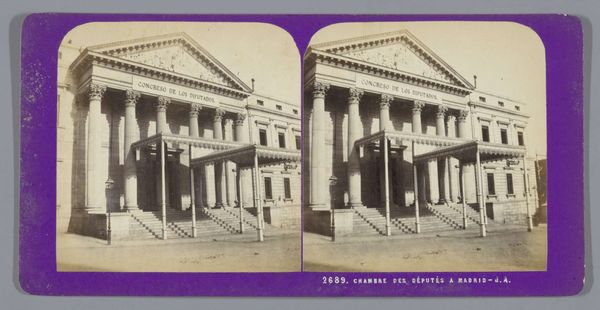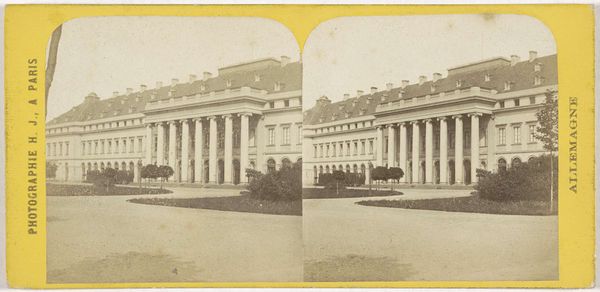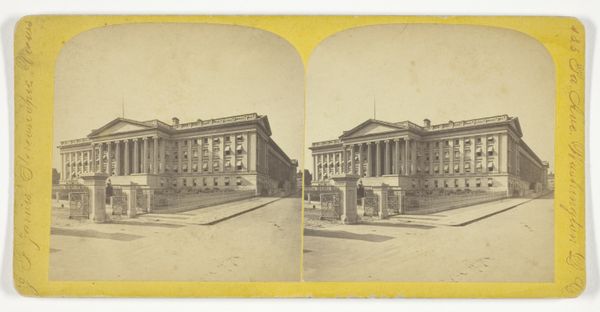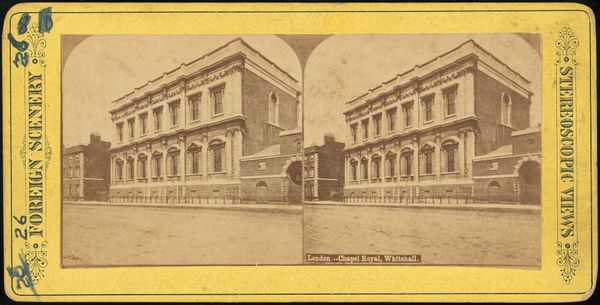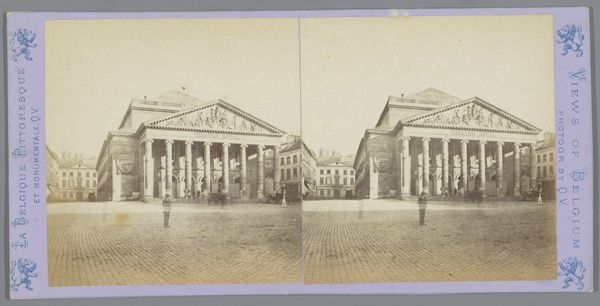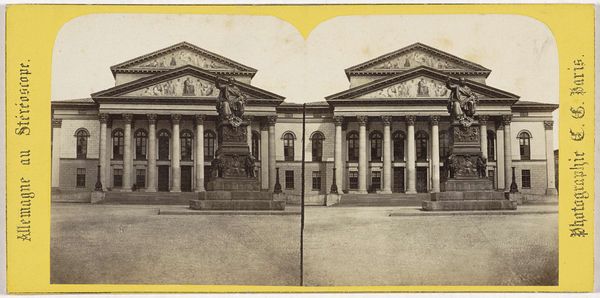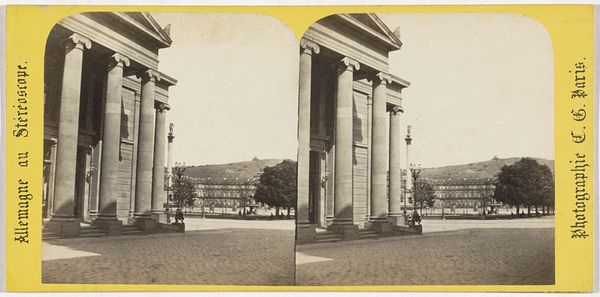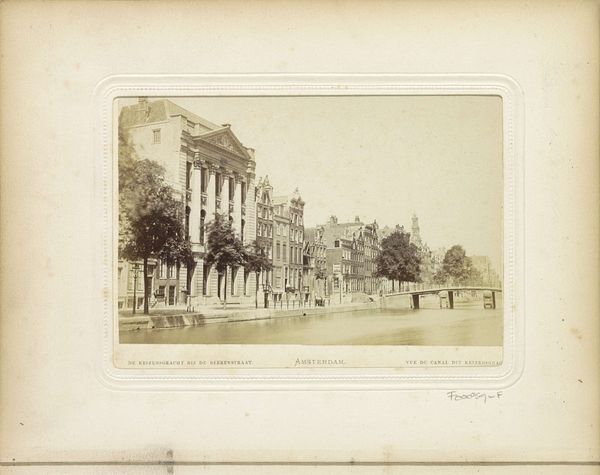
Dimensions: height 85 mm, width 170 mm
Copyright: Rijks Museum: Open Domain
Editor: This is "Exterieur van het theater van Nîmes" by Jean Andrieu, dating from somewhere between 1862 and 1876. It's a photograph of a very stately, classical-looking theater. The mood is quite formal and a little austere, and you can tell it wants to feel impressive. What's your read on this piece? Curator: The austerity is precisely the point. Neoclassicism, evident in the theater's design, wasn’t just about reviving architectural styles; it was about resurrecting social and political ideals. Consider the Enlightenment's emphasis on reason, order, and civic virtue. This building embodies those values, doesn’t it? Editor: It definitely does. The columns and symmetrical facade speak to that order. So, what sociopolitical context might have shaped Andrieu's documentation of this Neoclassical architecture? Curator: Think about the rise of photography coinciding with periods of significant social upheaval. Photography, unlike painting, offered a seemingly objective way to record reality. By documenting Neoclassical buildings, photographers were also capturing and reinforcing specific power structures, as these buildings often represented institutions that upheld the status quo. This, however, also allowed for its critique. What do you think? Is there a dialogue created by the photograph? Editor: I see what you mean. The photograph can almost democratize the experience of this monumental building, or on the flip side, emphasize who has access to institutions housed within such places of prestige. Curator: Exactly. It becomes a powerful tool to dissect and analyze the society it mirrors. It freezes not just the building in time, but its associated power dynamics as well. Editor: This has given me a completely new appreciation for photography of architecture! Curator: And understanding how the historical and social context intersects and comes to bear in Neoclassical architecture offers many interesting, contemporary avenues for further discussion.
Comments
No comments
Be the first to comment and join the conversation on the ultimate creative platform.
